B in the B16 stands for the inspection of the oil and mechanical components. It includes checking the oil filter, fluid level, brakes, steering, emission system, etc. Similarly, the 1 and 6 subcodes demand tire rotation and replacement of differential fluid.
Any generation of Honda Pilot requires scheduled maintenance. And B16 is also a regular formality you need to perform for your SUV.
The frequency of B16 repairs depends on the Honda Pilot generation and the driving condition. Such servicing is mandatory if you want to improve the mileage and longevity of your Honda Pilot.
Besides, regular B16 servicing is necessary to avoid breakdowns or accidents.
But, what does the B16 maintenance package include? How much will the Honda Pilot B16 servicing cost?
You can find the answer in the article below.
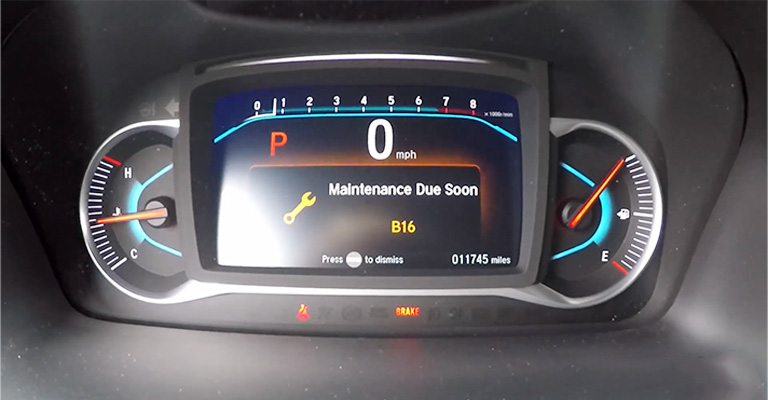
Honda Pilot B16 Maintenance Code
As per the Pilot Manual− B stands for the maintenance code of the following −
- Engine oil and oil filter
- Front and rear brakes
- Steering gearbox, tie rod ends, and boots
- Drive shaft boots
- Suspension components
- All fluid levels and condition of fluids
- Brake hoses and lines
- Exhaust system
- Fuel line and connection
Similarly, subcodes 1 and 6 indicate a rotating tire and a rear differential fluid, respectively.
In short, the B16 is a regular safety inspection for fluid fuel and specific mechanical components of the Honda Pilot. Ignoring the warning might damage your SUV.
Honda Pilot B16 Service Breakdown and Its Significance
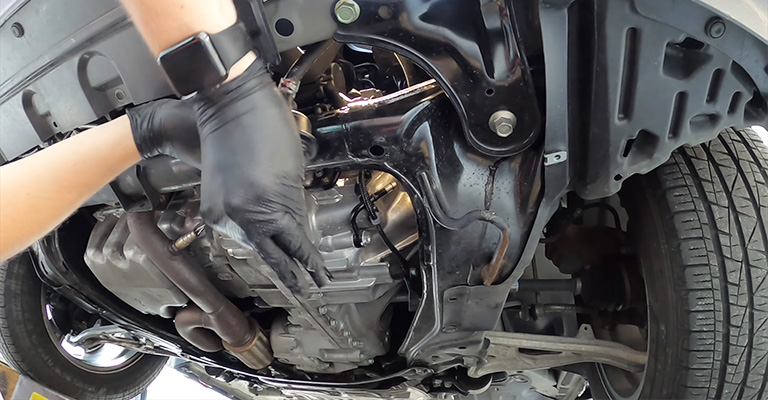
As mentioned, the B16 maintenance includes inspection and adjustment of both fluid and mechanical systems. This scheduled repair helps keep the Honda Pilot in top condition.
Allow me to break down the B16 maintenance package in detail.
Replace the Existing Engine Oil and the Fluid Filter
Engine oil focuses on lubricating the moving engine parts, reducing friction damage.
The oil also contributes to keeping the engine clean. As a result, the vehicle runs smoothly.
With the running service time, the oil level in the engine gets low and demands refilling. The general rule is to replace the engine oil after driving every 7500 miles.
Again, the contaminants present in the oil may hamper the efficiency of the engine. Hence, a filter is installed to catch the filths.
Usually, it takes 3 – 6 months for the filter to get dirty and unusable. After this period, you need to replace the fluid filter.
During the Honda Pilot B16 servicing, the mechanic drains the existing oil and replaces it with fresh oil. He also installs a new filter if the old one is worn out.
Rotate the Tire Position
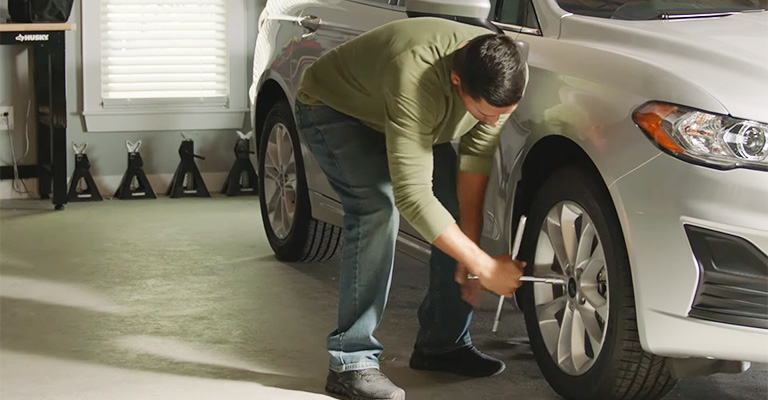
Of course, the more miles you drive, the more the tires wear out. But there is a chance that your SUV tire is wearing out unevenly.
With each specific position or turn you take on your Honda Pilot, the vehicle adjusts the tires accordingly. Thus, each tire’s contribution is unequal, leading to uneven wear.
Ignoring the uneven wear speeds up the tire damage and reduces its lifespan. It is one of the reasons why you must rotate the vehicle tires.
Smooth driving is another benefit that comes with tire rotation. Evenly worn tires distribute the load more efficiently and reduce unnecessary friction in the parts.
Besides, you enjoy more stability and traction on slippery or icy roads.
Experts advise rotating the Honda Pilot tires after 5000 miles. However, this tire rotation is included in the B16 maintenance.
Per the rules, you must move the tire to another position. For example, swap the back tire with the front tire on the same side. You can also do the rotation side to side or diagonally.
Change Rear Differential Fluid
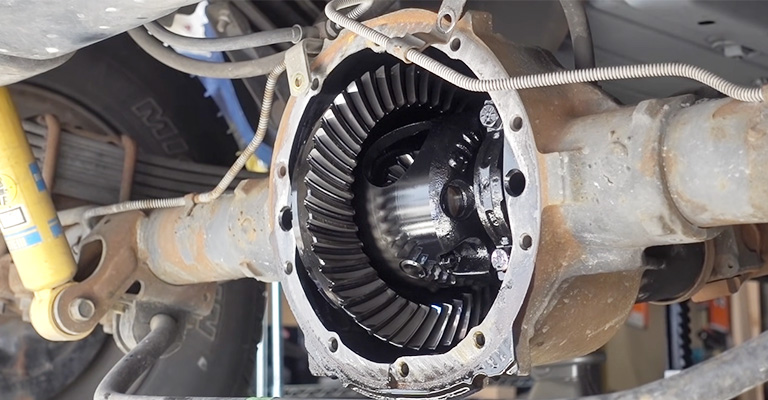
The differential system includes bearing, gears, and other moving parts. Without a differential system, the vehicle can’t perform the twists and turns perfectly.
However, the frictions of the moving components often generate high heat, which leads to corrosion and damage. The differential system’s fluid can cool off the generated heat, reduce wear, and protect the parts.
With the service time, the fluid gets contaminated and depleted. Of course, you can only maintain a healthy differential system with effective fluid.
Replacing the dirty fluid with a fresh one can boost vehicle performance and longevity. Usually, changing the differential fluid after 30000 – 50000 miles is recommended.
But the period can depend more or less on the diving condition, vehicle age, usage frequency, etc. You get the differential fluid replacement under the Honda Pilot B16 maintenance.
The mechanic drain the old fluid and replenishes the tank with a fresh one.
Inspect the Front and Rear Brake Pads

Both the front and rear brakes are equally important to ensure safe and smooth Honda Pilot driving.
The front brakes stop your SUV whenever necessary. On the contrary, the rear ones keep the Honda Pilot stationary when parked or inclined.
Over time, these brakes can wear out and get dirty. You won’t be able to stop the SUV in emergency conditions if the brakes run out of service.
Hence, you should inspect the brake conditions after 6 months or every 20000 – 60000 miles. You have to inspect the brakes and make adjustments during the Honda Pilot B16 maintenance.
For example, cleaning the pads or lubricating the brake calipers.
Repair the Suspension System and Tie Rods
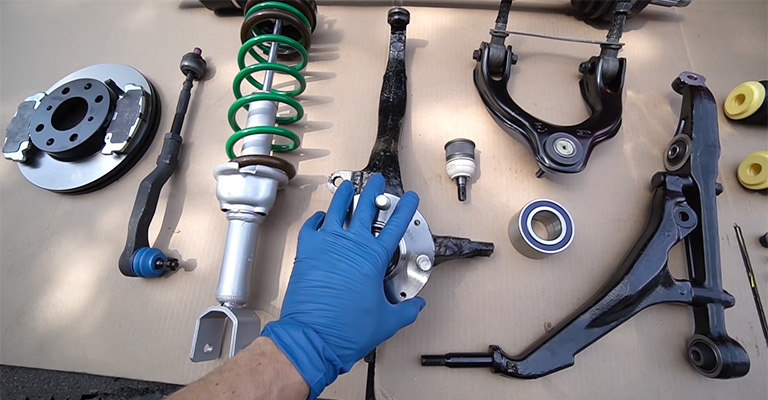
The suspension system of the Honda Pilot absorbs shock while running on a rough path. A faulty suspension can not suck up the energy as smoothly as before.
Therefore, the SUV generates vibration and bizarre noise.
Again, a tie rod is another important component that connects the suspension to the steering. A worn-out tie rod makes the steering wheel loose, shaky, and vibratory.
Thus, driving the Honda Pilot becomes challenging and tiring for you.
The Honda Pilot B16 servicing demands a thorough inspection of the suspension and tie rod. You have to repair it if the system is broken or damaged.
Sometimes, you just have to tune up the loose links or oil up the system.
Adjust the Steering Wheels

A faulty steering wheel doesn’t allow you to accelerate or brake smoothly. Therefore, it increases the risk of an accident while driving at high speed.
Scheduled steering servicing every 2 years or 40000 miles is mandatory to ensure driving safety.
The steering wheel inspection and repair are also included in the Honda Pilot B16 maintenance. Technicians look into the system and make the necessary adjustments.
How Much Does B16 Maintenance Cost?
The B16 maintenance can cost you $200 – $300 as a bundle offer. It means you get a discounted rate if you do the servicing of the oil filter, mechanical parts, tire rotation, and differential fluid.
If you go for individual servicing, the pricing will be different.
For example, the mechanics can charge you $150 for differential fluid replacement. Similarly, the charge is $100 for tire rotation or oil level inspection.
However, the servicing cost for Honda Pilot B16 will vary depending on your locality and mechanic shops. Ask around in the neighborhood to seal a good deal.
How Often Do Honda Pilots Need B16 Maintenance?
The SUV itself reminds you of the B16 servicing when necessary. But then again, it is better if you stay ahead of schedule.
Generally, the Honda Pilot requires B16 maintenance after every 10000 – 15000 miles of driving. But you may need servicing later or before hitting this range, depending on your driving habit and SUV model.
Your Honda Pilot demands more frequent B16 servicing if you drive in −
- Stop-and-go traffic conditions
- Highways
- Dusty roads
- Cold regions
How to Reset the Service Light on Honda Pilot B16 Service?
Some Honda Pilot models allow you to reset the B16 servicing line from the dashboard.
Remember, resetting the code doesn’t mean you are done with the inspection. Your SUV still requires mandatory maintenance.
Here is a basic idea of how to reset the B16 service light. The steps can vary slightly depending on the Honda Pilot model.
- Go to the steering wheel buttons.
- Select the oil life setting.
- Push the middle reset button for 5 – 10 seconds.
- Hit reset when the maintenance screen pops up.
- Push the reset button again.
- The B16 service light should vanish from the dashboard.
Can You Still Drive the Honda Pilot If B16 Light Is on?
As a matter of fact, you can drive the Honda Pilot with the B16 light on. The designers have programmed it in a way to warn you a week or two ahead of the deadline.
But make sure the SUV is not leaking any fluid. Also, the oil level should be normal, and the moving components should be in order.
However, there is no way of ensuring this doubt. Hence, taking the Honda Pilot to the nearest mechanic is recommended.
Frequently Asked Questions
Honda uses a rule of thumb for changing the differential fluid. In the case of Honda Pilots, replace the fluid when you hit 7500 miles for the first time. Later, change the differential fluid after every 15000 miles of the drive.
Service B indicates both oil and oil filter changes in the Honda Pilots. Besides, the code stands for inspecting the mechanical components like brakes, suspension, steering, fluid level, exhaust system, etc.
The A in the A16 indicates that the Honda Pilot needs oil replacement. Again, subcode 1 stands for tire rotation, and 6 suggests a differential fluid change.
Conclusion
So, what does B16 mean on a Honda Pilot? Well, the code is a warning that your SUV requires an urgent regular inspection.
Generally, B16 servicing includes an oil change with other mechanical component adjustments. The maintenance also demands a tire rotation and inspection of the differential fluid.
Depending on the SUV model, age, and driving history, you may have to go with one or the whole servicing package. B16 maintenance is costly and ranges from $200 – $300.
Though expensive, this inspection is mandatory to ensure the driving safety of your Honda Pilot. You can also DIY the servicing if you are an expert on cars.
Otherwise, taking the SUV to the mechanic is the most logical decision.

Leave a Reply